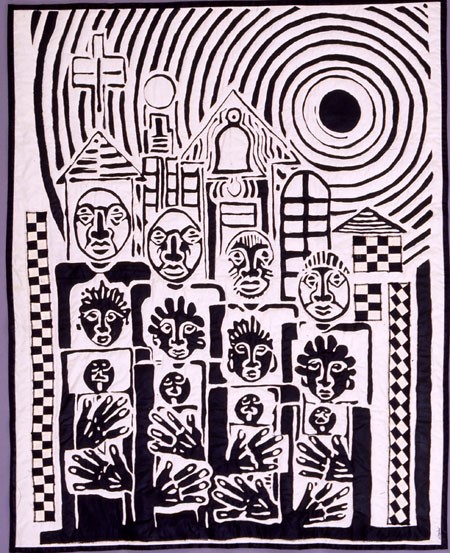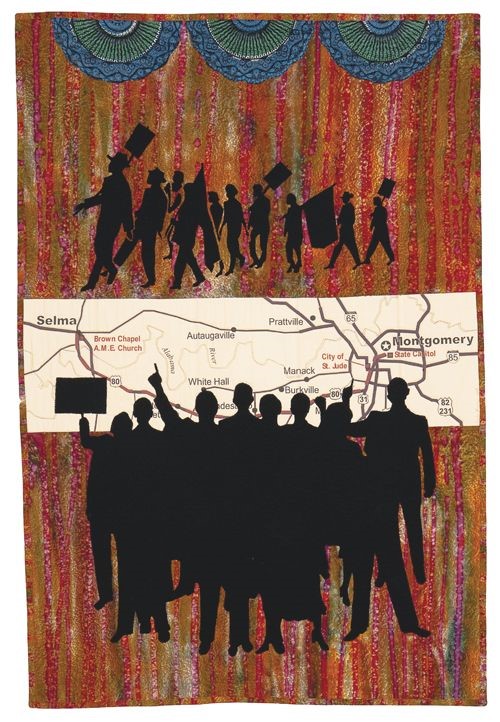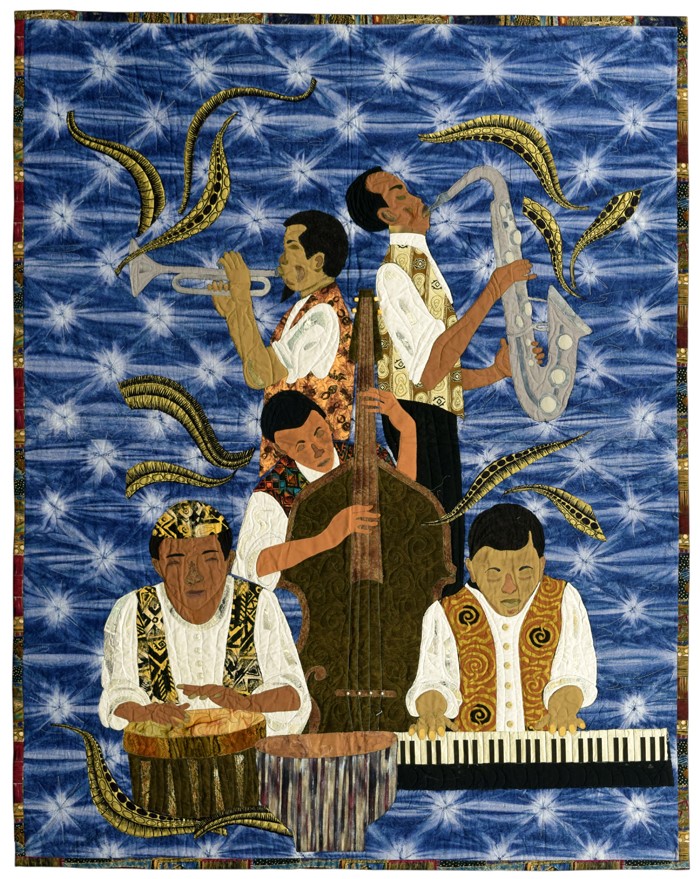Storyteller and Craftsperson: Dr. Carolyn Mazloomi
I wondered when I’d get a chance to say “It’s not rocket science” here. And then I came across Dr. Carolyn Mazloomi. This Honoree has a PhD. in aerospace engineering! But as intriguing as that might be, it’s not what she’s known for among quilters.
Dr. Mazloomi is an author who has written a dozen books on quilt related topics. Her book, Spirits of the Cloth (Random House), was given the “Best Non-Fiction Book of the Year” award by the American Library Association. She is also a curator and has presented numerous exhibitions of African-American quilts, beginning in 1998, “Spirits of the Cloth” at the American Craft Museum, New York City, New York and most recently in 2019 with “We Who Believe in Freedom” at the National Freedom Center Museum, Cincinnati, OH. As the founder and general factotum of the Women of Color Quilters Network, she has helped preserve and promote the cultural significance of quilt-making in the African-American community.
You can read more about Dr. Mazloomi in the several links below—and you should because she has an impressive list of accomplishments. But she has been called a fiber griot (a West African historian, storyteller, praise singer, poet, or musician), and I want to take a look at her quilts and the stories she tells with them.
Dr. Mazloomi sees herself as a storyteller as well as a craftsperson; yes, the process may be exciting and wondrous, but what’s behind it is more significant. From an Oral history interview with Carolyn Mazloomi, 2002, September, 17-30, Archives of American Art, Smithsonian Institution:
The ability to create a piece of work that’s graphically complex from a simple piece of cloth is fascinating. The ability to combine various pieces of cloth, various colors and textures of cloth, to create a graphic piece to me is mind-boggling…. It’s always about the story and the finished product. And I think as with all artists, all quilt-makers, as long as you’re living, as long as you can think, you will always have stories. If you lived 100 lives, you can’t get all these stories out…We will always have stories and you want to get them out, and that’s the satisfaction of quilt-making.
One of the big stories Dr. Mazloomi tells is family. In her view, this is a central cultural theme for African-American quilters. In talking about their quilts, she says,
They were made for family. They were made for friends. And for us, friends are family. In the past it was about taking those bits of cloth, and still now in the South, taking old clothes and making them into a quilt to give to the grandkids or to one’s children. Again, you go back into that oral history about who we are and sharing who we are, and you know, sharing that with our families and friends. But that was the – that’s the backbone of African American quilt-making. Even to this day, the majority of the quilt-makers make the work for their family. And they love to show references of the family, or people in the family, on the quilts. That just binds the family, bonds them closer together, you know…. “I am quilting. This is my legacy for my children. This is what I leave for my children. I leave a bit of myself in these quilts for my children. I leave this for my family. This is who I am. This is who we are.”
Here is one of her own quilts—not for, but about, family. It’s made in a striking black and white woodcut style that she favors (when she’s not going wild with color). You can see more quilts in this series on her website linked below.

Another major theme is politics, because, as she says about herself and quilters of her generation,
Events in our lives that have happened to us socially and politically are reflected in our work, okay. We came up in that ‘60s and ‘70s generation; you know, we were the children of the civil rights movement. Of course, it’s going to be in our work, because we can’t forget that. You don’t live through that and leave it behind. People say we should leave it behind, but I’m bringing that baggage with me, because it’s just something I can’t forget. It’s something that I shouldn’t forget.
Here is a quilt she made to honor the Selma March; it’s dedicated to the late John Lewis.

On another note, (pardon the pun), Dr.Malzoomi tells the story of jazz. As a child she was close to and supported by an aunt who owned a juke joint. In true griot fashion, Dr. Mazloomi sings the praises of this beloved woman through her portraits of Billie Holiday, Dizzy Gillespie, the jazz scene, and this quilt.

So many stories to tell! And what happens to these stories once the quilts are made? Dr. Malzoomi said in an interview for NEA Arts Magazine 2014,
When the quilters are in sync with the social and political and the cultural currents in their community, they render that in their artwork. So, the quilts are community property. It’s one of the ways that we as artists use this tool, these quilts, to foster knowledge. And it’s about engaging other people in our culture as well.
But they’re creating these community documents and actually they’re cultural documents. They’re pieces of history that tell the story of our culture, what’s happening here in the United States. They’re serious, serious cultural documents and I’m just in awe.
When you can look at something and it has the power to touch you and inform, then you’ve done your job as an artist. And I often tell the quilt makers sometimes you can make a quilt that’s so powerful in story and it touches so many people. Then you have lost that quilt, because the quilt does not spiritually belong to you anymore. It belongs to the public. It belongs to the people that see it because it becomes a part of their spirit, and it’s touched them in such a way that is so profound it becomes unforgettable.
I don’t make quilts like this—it’s not in my cultural tradition or my personal inclination, but I’m glad that Dr. Mazloomi and the other artists she has encouraged to keep up this work are out there touching our spirits. I imagine she has “lost” a lot of quilts over the years.
Your quilting friend,
Anna
All quotes, unless otherwise noted, are from Oral history interview with Carolyn Mazloomi, 2002 September 17-30. Archives of American Art, Smithsonian Institution.
Further reading and viewing:
Carolyn’s Website: https://carolynlmazloomi.com
On The Quilters Hall of Fame website: https://quiltershalloffame.net/carolyn-mazloomi/
Oral history interview https://www.aaa.si.edu/collections/interviews/oral-history-interview-carolyn-mazloomi-11504#transcript
Dr. Mazloomi will be the Keynote Speaker at Virtual AQSG 2020 Saturday, October 3, 2020. “Surviving Blackness in America:
Quilts as Political Statement” https://americanquiltstudygroup.org/